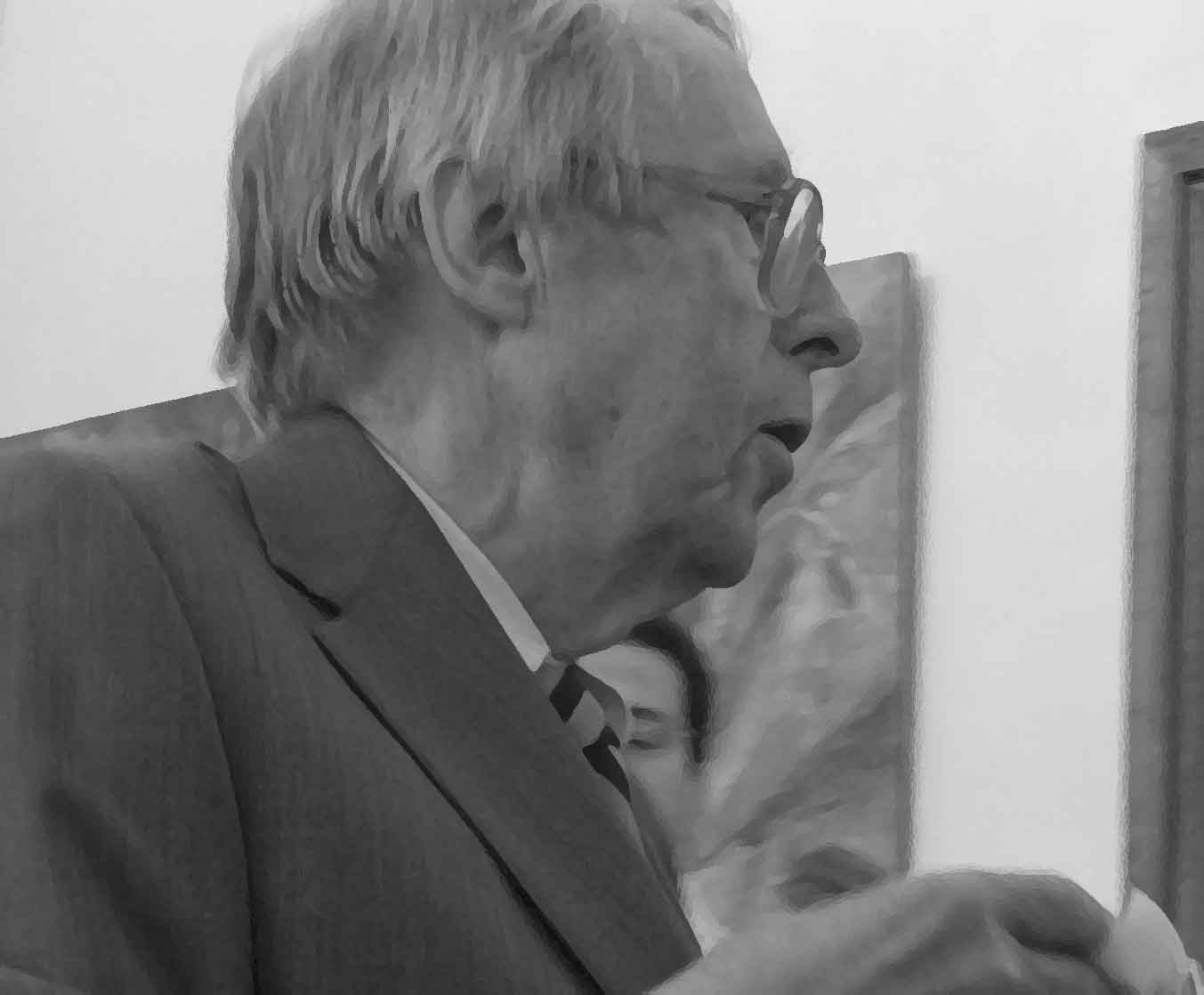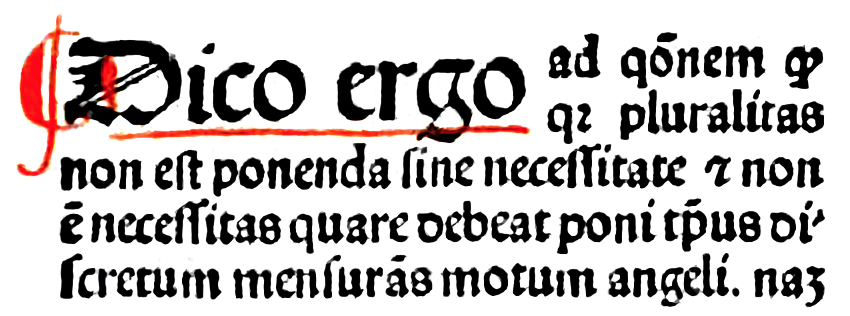|
Meinong's Jungle
Meinong's jungle is the name given by Richard Routley (1980) to the repository of non-existent objects in the ontology of Alexius Meinong. Overview Meinong, an Austrian philosopher active at the turn of the 20th century, believed that since non-existent things could apparently be referred to, they must have some sort of being, which he termed ''sosein'' ("being so"). A unicorn and a pegasus are both non-being; yet it's true that unicorns have horns and pegasi have wings. Thus non-existent things like unicorns, square circles, and golden mountains can have different properties, and must have a 'being such-and-such' even though they lack 'being' proper. The strangeness of such entities led to this ontological realm being referred to as "Meinong's jungle". The jungle is described in Meinong's work ''Über Annahmen'' (1902). The name is credited to William C. Kneale, whose ''Probability and Induction'' (1949) includes the passage "after wandering in Meinong's jungle of subsistence ... [...More Info...] [...Related Items...] OR: [Wikipedia] [Google] [Baidu] |
Richard Routley
Richard Sylvan (13 December 1935 – 16 June 1996) was a New Zealand–born philosopher, logician, and environmentalist. Biography Sylvan was born Francis Richard Routley in Levin, New Zealand, and his early work is cited with this surname. He studied at Victoria University College of the University of New Zealand (now Victoria University of Wellington), and then Princeton University, before taking positions successively at several Australian institutions, including the University of Sydney. From 1971 until his death in Bali, Indonesia, he was a fellow at the Research School of Social Sciences (RSSS) at the Australian National University in Canberra. Sylvan was married to the philosopher/environmentalist Val Routley (later, Val Plumwood), with whom he worked closely for twenty years before their separation in 1982. After his divorce from Plumwood, he married Louise Sylvan (née Mirlin) in 1983 and adopted the last name ''Sylvan'' (an English word meaning "of the forest") to ... [...More Info...] [...Related Items...] OR: [Wikipedia] [Google] [Baidu] |
Theory Of Descriptions
The theory of descriptions is the philosopher Bertrand Russell's most significant contribution to the philosophy of language. It is also known as Russell's theory of descriptions (commonly abbreviated as RTD). In short, Russell argued that the syntactic form of descriptions (phrases that took the form of "The aardvark" and "An aardvark") is misleading, as it does not correlate their logical and/or semantic architecture. While descriptions may seem fairly uncontroversial phrases, Russell argued that providing a satisfactory analysis of the linguistic and logical properties of a description is vital to clarity in important philosophical debates, particularly in semantic arguments, epistemology and metaphysical elements. Since the first development of the theory in Russell's 1905 paper "On Denoting", RTD has been hugely influential and well-received within the philosophy of language. However, it has not been without its critics. In particular, the philosophers P. F. Strawson and ... [...More Info...] [...Related Items...] OR: [Wikipedia] [Google] [Baidu] |
Abstract Object Theory
Abstract object theory (AOT) is a branch of metaphysics regarding abstract objects. Originally devised by metaphysician Edward Zalta in 1981, the theory was an expansion of mathematical Platonism. Overview ''Abstract Objects: An Introduction to Axiomatic Metaphysics'' (1983) is the title of a publication by Edward Zalta that outlines abstract object theory. AOT is a dual predication approach (also known as "dual copula strategy") to abstract objects Dale Jacquette, ''Meinongian Logic: The Semantics of Existence and Nonexistence'', Walter de Gruyter, 1996, p. 17. influenced by the contributions of Alexius MeinongZalta (1983:xi). and his student Ernst Mally. On Zalta's account, there are two modes of predication: some objects (the ordinary concrete ones around us, like tables and chairs) ''exemplify'' properties, while others (abstract objects like numbers, and what others would call " non-existent objects", like the round square, and the mountain made entirely of gold) merely ... [...More Info...] [...Related Items...] OR: [Wikipedia] [Google] [Baidu] |
Jaakko Hintikka
Kaarlo Jaakko Juhani Hintikka (12 January 1929 – 12 August 2015) was a Finnish philosopher and logician. Life and career Hintikka was born in Helsingin maalaiskunta (now Vantaa). In 1953, he received his doctorate from the University of Helsinki for a thesis entitled ''Distributive Normal Forms in the Calculus of Predicates''. He was a student of Georg Henrik von Wright. Hintikka was a Junior Fellow at Harvard University (1956-1969), and held several professorial appointments at the University of Helsinki, the Academy of Finland, Stanford University, Florida State University and finally Boston University from 1990 until his death. He was the prolific author or co-author of over 30 books and over 300 scholarly articles, Hintikka contributed to mathematical logic, philosophical logic, the philosophy of mathematics, epistemology, language theory, and the philosophy of science. His works have appeared in over nine languages. Hintikka edited the academic journal ''Synthese ... [...More Info...] [...Related Items...] OR: [Wikipedia] [Google] [Baidu] |
Possible World Semantics
A possible world is a complete and consistent way the world is or could have been. Possible worlds are widely used as a formal device in logic, philosophy, and linguistics in order to provide a semantics for intensional and modal logic. Their metaphysical status has been a subject of controversy in philosophy, with modal realists such as David Lewis arguing that they are literally existing alternate realities, and others such as Robert Stalnaker arguing that they are not. Logic Possible worlds are one of the foundational concepts in modal and intensional logics. Formulas in these logics are used to represent statements about what ''might'' be true, what ''should'' be true, what one ''believes'' to be true and so forth. To give these statements a formal interpretation, logicians use structures containing possible worlds. For instance, in the relational semantics for classical propositional modal logic, the formula \Diamond P (read as "possibly P") is actually true if an ... [...More Info...] [...Related Items...] OR: [Wikipedia] [Google] [Baidu] |
Modal Realism
Modal realism is the view propounded by philosopher David Lewis that all possible worlds are real in the same way as is the actual world: they are "of a kind with this world of ours." It is based on the following tenets: possible worlds exist; possible worlds are not different in kind from the actual world; possible worlds are irreducible entities; the term ''actual'' in ''actual world'' is indexical, i.e. any subject can declare their world to be the actual one, much as they label the place they are "here" and the time they are "now". ''Extended modal realism'' is a form of modal realism that involves ontological commitments not just to ''possible worlds'' but also to ''impossible worlds''. Objects are conceived as being spread out in the modal dimension, i.e. as having not just spatial and temporal parts but also modal parts. This contrasts with Lewis' modal realism according to which each object only inhabits one possible world. Common arguments for modal realism refer to ... [...More Info...] [...Related Items...] OR: [Wikipedia] [Google] [Baidu] |
Plato's Beard
In metaphysics, Plato's beard is a paradoxical argument dubbed by Willard Van Orman Quine in his 1948 paper "On What There Is". The phrase came to be identified as the philosophy of understanding something based on what does not exist. Doctrine Quine defined Plato's beard – and his reason for naming it so – in the following words: This is the old Platonic riddle of nonbeing. Nonbeing must in some sense be, otherwise what is it that there is not? This tangled doctrine might be nicknamed Plato's beard; historically it has proved tough, frequently dulling the edge of Occam's razor. The argument has been favored by prominent philosophers including Bertrand Russell, A. J. Ayer and C. J. F. Williams. Declaring that not ''p'' (¬''p'') cannot exist, one may be forced to abandon truisms such as negation and ''modus tollens In propositional logic, ''modus tollens'' () (MT), also known as ''modus tollendo tollens'' (Latin for "method of removing by taking away") and deny ... [...More Info...] [...Related Items...] OR: [Wikipedia] [Google] [Baidu] |
Occam's Razor
Occam's razor, Ockham's razor, or Ocham's razor ( la, novacula Occami), also known as the principle of parsimony or the law of parsimony ( la, lex parsimoniae), is the problem-solving principle that "entities should not be multiplied beyond necessity". It is generally understood in the sense that with competing theories or explanations, the simpler one, for example a model with fewer parameters, is to be preferred. The idea is frequently attributed to English Franciscan friar William of Ockham (), a scholastic philosopher and theologian, although he never used these exact words. This philosophical razor advocates that when presented with competing hypotheses about the same prediction, one should select the solution with the fewest assumptions, and that this is not meant to be a way of choosing between hypotheses that make different predictions. Similarly, in science, Occam's razor is used as an abductive heuristic in the development of theoretical models rather than as a rigoro ... [...More Info...] [...Related Items...] OR: [Wikipedia] [Google] [Baidu] |
Ontological Commitment
An ontological commitment of a language is one or more objects postulated to exist by that language. The 'existence' referred to need not be 'real', but exist only in a universe of discourse. As an example, legal systems use vocabulary referring to 'legal persons' that are collective entities that have rights. One says the legal doctrine has an ''ontological commitment'' to non-singular individuals. In information systems and artificial intelligence, where an ontology refers to a specific vocabulary and a set of explicit assumptions about the meaning and usage of these words, an ontological commitment is an agreement to use the shared vocabulary in a coherent and consistent manner within a specific context. In philosophy, a "theory is ontologically committed to an object only if that object occurs in ''all'' the ontologies of that theory." Background The sentence “Napoleon is one of my ancestors” apparently commits us only to the existence of two individuals (i.e., Napoleo ... [...More Info...] [...Related Items...] OR: [Wikipedia] [Google] [Baidu] |
Colin McGinn
Colin McGinn (born 10 March 1950) is a British philosopher. He has held teaching posts and professorships at University College London, the University of Oxford, Rutgers University, and the University of Miami. McGinn is best known for his work in the philosophy of mind, and in particular for what is known as new mysterianism, the idea that the human mind is not equipped to solve the problem of consciousness. He is the author of over 20 books on this and other areas of philosophy, including ''The Character of Mind'' (1982), ''The Problem of Consciousness'' (1991), ''Consciousness and Its Objects'' (2004), and ''The Meaning of Disgust'' (2011). In 2013, McGinn resigned from his tenured position at the University of Miami after being accused of sexual harassment by a female graduate student. The resignation touched off a debate about the prevalence of sexism and sexual harassment within academic philosophy. Early life and education McGinn was born in West Hartlepool, a tow ... [...More Info...] [...Related Items...] OR: [Wikipedia] [Google] [Baidu] |
Abstract Objects
In metaphysics, the distinction between abstract and concrete refers to a divide between two types of entities. Many philosophers hold that this difference has fundamental metaphysical significance. Examples of concrete objects include plants, human beings and planets while things like numbers, sets and propositions are abstract objects. There is no general consensus as to what the characteristic marks of concreteness and abstractness are. Popular suggestions include defining the distinction in terms of the difference between (1) existence inside or outside space-time, (2) having causes and effects or not, (3) having contingent or necessary existence, (4) being particular or universal and (5) belonging to either the physical or the mental realm or to neither. Despite this diversity of views, there is broad agreement concerning most objects as to whether they are abstract or concrete. So under most interpretations, all these views would agree that, for example, plants are concrete ... [...More Info...] [...Related Items...] OR: [Wikipedia] [Google] [Baidu] |

